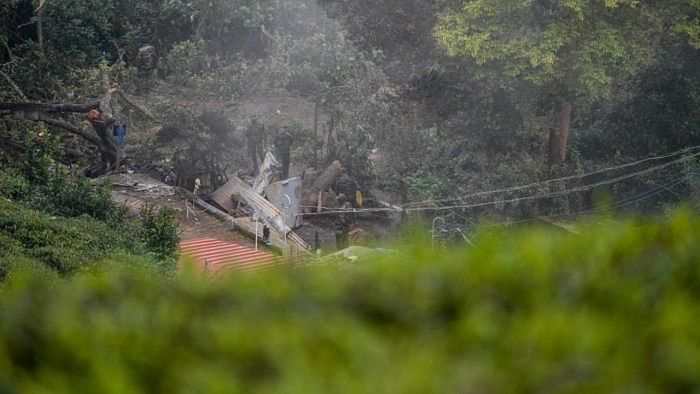
When Gen. Bipin Rawat’s helicopter crashed on December 8, killing him, his wife and 11 others, various experts discussed every aspect and fallout of the accident on television. Inevitably, the most discussed question was, how could the accident have happened, with the obvious but underlying thought process of who or what was to blame. At this point, it would be appropriate to dwell on the mechanics of the investigation and focus on the human factor.
Indubitably, the Mi-17 V5 helicopter was a new and state-of-the-art machine, the crew highly qualified, operating conditions well within their capabilities – in fact, the accident should not have taken place. Except, against all odds, it did happen.
A flying accident never has a single cause. There are always contributing factors, some deep-seated and difficult to identify. There are many links in the chain that links the flight to a safe conclusion or results in a mishap, and weakness in any link has serious consequences. What is generally forgotten is that the purpose of the accident inquiry is to identify the cause of the accident, to prevent recurrence. Attribution of blame is secondary. An accident investigation is not a kangaroo court to attribute blame.
When a flight takes place, it is assumed that the crew are mentally and physically fit, they have had adequate rest and nourishment, their aircraft is fully serviceable, weather conditions are favourable for the mission, and every parameter is within laid down limits. When an accident happens, the investigation takes none of these assumptions for granted.
The Court of Inquiry studies the crew qualifications, their total experience and experience on that type of aircraft, including recent flying, their experience in that area of operations, their accident or incident records, their competence and experience for that mission. Weather conditions and all other aspects peculiar to the mission, the authorisation and briefing for the sortie, any possibility – however unlikely – of sabotage or external attack by an air-to-ground missile, are checked out.
These helicopters carry a complex flight data recorder (FDR), and a cockpit voice recorder (CVR) – popularly called ‘black box’, designed to withstand any kind of crash. Every single flight and engine parameter is recorded in the CVR, and provides an accurate split-second by second indication of anything that could have possibly gone wrong with the engine or airframe. The CVR records every word spoken by the crew of the helicopter, giving invaluable insights as to what could have happened.
All aeromedical factors are considered. The physical and mental fitness of the aircrew, their composure before and during the mission, details of their food and drink before the mission, the workload they have been subjected to, their level of fatigue based on the duration they have flown and the flying conditions – nothing is left out. This forms part of the human factors that could have led to an error by the aircrew or by the maintenance staff, or both. Every part of the wreckage of the aircraft is retrieved and examined in microscopic detail. Modern technology allows an astounding level of information and detail to be obtained from crashed aircraft components.
The study of human factors involved in the accident is a major part of the investigation. The training, briefing, supervision and execution of the sortie are studied, for any inadequacies. Any degradation in performance of the aircrew due to distraction caused by the surroundings and conditions of the flight, the nature of any malfunction that may have taken place, even the seniority difference between the captain and the co-pilot, and the possibility of any friction between the crew members leading to a lack of concentration is studied by the investigation board.
For the first time in the country, there will be a tri-Services investigation, and we can rest assured that it will be conducted with absolute thoroughness and without a single detail being left out of consideration. Therefore, it serves little purpose for media discussions of the possible causes, day in and day out, with unfounded assumptions made. Sadly, this happened even when the funeral cortege of Gen. Rawat was on its way to the cremation ground.
No machine, however new, well designed, or equipped with the very latest in sophistication is infallible. No human being, no matter how competent, qualified or experienced, is immune from making a mistake. The investigation will take time but will be exceedingly detailed. Until the findings are made known, it is best if conjecture for the sake of drama and ‘newsworthiness’ are avoided.
(The writer is a helicopter pilot and instructor with 12,000 flying hours)
Check out DH's latest videos: